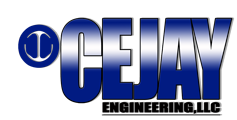Products
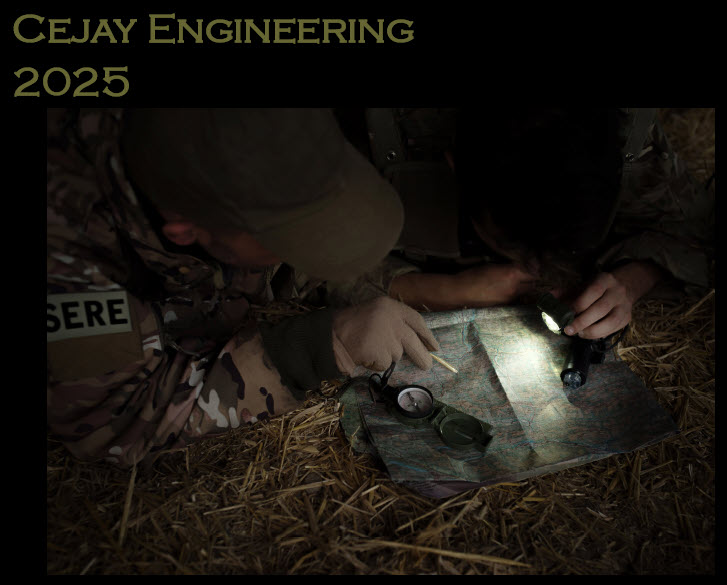
Download Our Product Caatalog: pdf Cejay Engineering Catalog (26.93 MB)
MK4 Liplight Battery Life Table
| Mode | Brightness | Continuous Runtime |
| Spot (1-LED) | 100% | 14.0 Hrs |
| Flood (3-LEDs) | 100% | 6.0 Hrs |
| Spot and Flood (4-LEDs) | 100% | 5.0Hrs |
| Spot (1-LED) | 50% | 45Hrs |
| Flood (3-LEDs) | 50% | 15Hrs |
| Spot and Flood (4-LEDs) | 50% | 12Hrs |
MK4 Liplight Replacement Battery Table
Please use the following Alkaline or Silver-Oxide Batteries in your MK 4 Liplight. Silver-Oxide batteries have a longer shelf-life, but are more expensive.
| National Stock Number | Commercial Names and Equivalents | IEC Name | ANSI/NEDA Name |
| Alkaline NSN: | Alkaline | Alkaline | |
| 6135-99-792-8475 | SR44, AG13/SG13, LR44/LR154 |
LR1154 | 1166A |
| Silver-Oxide NSN: | Silver-Oxide | Silver-Oxide | |
| 6135-99-651-3240 | A76/S76/EPX76, 157/303/357, 1128MP, 208-904, A-76, A613, AG14,AG-14, CA18, CA19, CR44, D76A,G13A, G13-A, GDA76, GP76A, GPA7,GPA75, GPA76, GPS76A, KA, KA76,L1154, L1154C, L1154F, L1154G,L1154H, LR44G, LR44GD, LR44H,MS76H, PX76A, PX675A, RPX675,RW82, SB-F9, V13G |
SR1154 | 1107SO, 1131SOP |
CAUTION: Zinc Air Batteries should not be used in the MK4 Liplight. Zinc Air Batteries require a supply of oxygen to operate. Because of the lights close proximity to the mouth, condensation can develop within the battery compartment, and impede air supply to the batteries potentially impacting operation. Zinc Air Batteries are also not recommended because of their short useful life. These batteries use a sealing tab to keep air out of the cells while in storage. Once this seal is broken, the batteries chemicals are exposed to air and begin to dry out rendering the battery unusable after a few weeks, regardless of use.
Download this Information: pdf MK4 Battery Information Sheet (57 KB) pdf
The Cejay Engineering line of LipLight products is the most versatile in the industry. We offer configurations for all helmet and mic boom configurations. This brief article will help you choose the right LipLight configuration for your specific needs.
Cejay liplights are intended to fit either Flex Booms or Twin Wire Frame Booms.
Twin Wire Frame Boom
The Twin Wire Frame Boom is the most common type of boom configuration utilized by the US military. Most helmet manufactures fit the twin wireframe as standard equipment. Below are illustrations of Twin Wire Frame Boom.
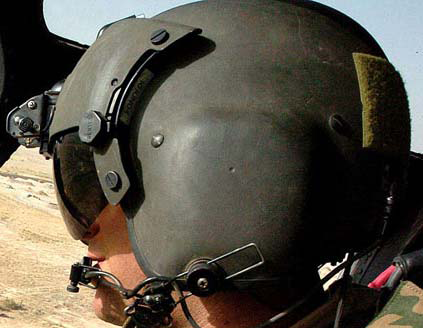

The twin wire frame uses a pivot screw to attach the microphone capsule to the microphone boom. Where a pivot screw is used, Cejay recommends using our integrated bracket lip light design (Part Numbers 904222 or 904223). Below is a picture of the MK4 (Part Number 904223) installed on a twin wire frame using the provided modified pivot screw.
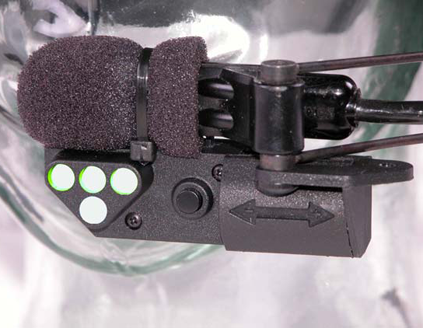 Some flex boom microphones utilize a pivot screw to secure the microphone capsule such as the David Clark, model H10-76, or H10-76XL. Since these headsets utilize a pivot screw, Cejay engineering recommends using our integrated bracket lip light design (Part Numbers 904222 or 904223).
Some flex boom microphones utilize a pivot screw to secure the microphone capsule such as the David Clark, model H10-76, or H10-76XL. Since these headsets utilize a pivot screw, Cejay engineering recommends using our integrated bracket lip light design (Part Numbers 904222 or 904223).
Flex Boom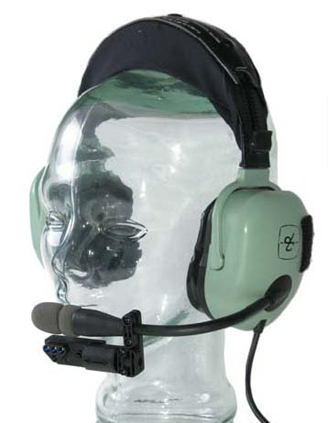
The Flex Boom is used on all models of Bose Headsets and several of the David Clark civilian headsets. Below are illustrations of a Flex Boom.
For these types of booms, Cejay recommends the MK3 (Part Number 904216) or the MK4 (Part Number 904220). The following picture shows an MK 4 installed on a flex boom.
At Cejay we are committed to making sure that you have the best light for your mission. If you still have uncertainties as to which light is correct for your headset or helmet please contact us directly at www.cejayeng.com or www.s-lite.com.
Please have the following information available
Headset Manufacture:___________________
Model or Part Number:__________________
Microphone Manufacture:________________
Microphone Part Number:________________
Photo of the helmet or headset you are looking to install a liplight on. This will allow us to make the best recommendation for your mission.

